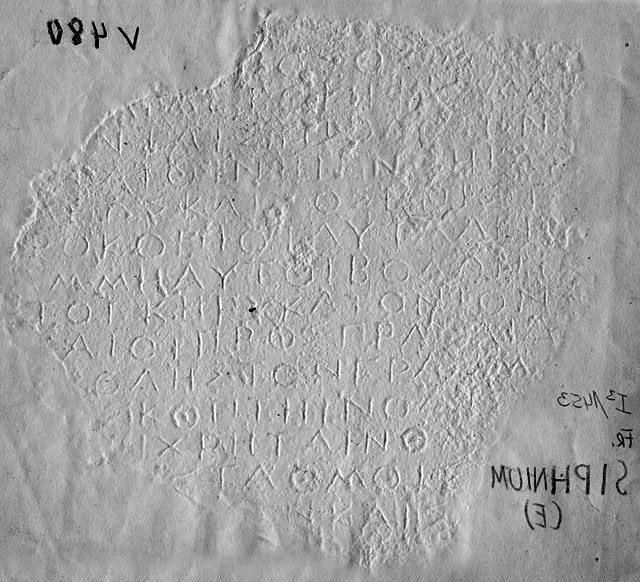
The Athenian Standards Decree. New Text, New ContextsSince the discovery of a second fragment in Siphnos and its publication by Adolf Wilhelm in 1903 the Athenian Standards Decree has played a pivotal role in the study of the Athenian Empire and Greek coinage of the second half of the fifth century BC. On the one hand the problems it presents are representative of the challenges faced in much of the epigraphy of the Athenian Empire. On the restoration and interpretation of its highly fragmentary text depend interpretations of the nature of Athenian imperialism. Its date has been the subject of considerable dispute. On the other hand its survival in multiple copies, with substantial overlap, offers a unique set of challenges to reconstruction. Moreover, the subject matter of the Decree holds out the tantalising possibility of relating one category of evidence for fifth-century history, inscriptions, with another, coinage. Disputes over the date and significance of the Standards Decree have had no less an impact on numismatic than on epigraphic scholarship. The discovery of a second fragment of the Aphytis copy of the decree, presented by Prof. Miltiades Hatzopoloulos to an international audience for the first time at the Barcelona Epigraphical Congress in 2002, has given fresh impetus to study of the decree, and in April 2004 a colloquium was held at Corpus Christi College under the auspices of the Department of Coins and Medals at the British Museum, the Corpus Christi Centre Centre for the Study Of Greek and Roman Antiquity and the Centre for the Study of Ancient Documents to re-examine the text of the decree and review its wider context in fifth-century Greek history. Speakers at the Colloquium included Angelos Matthaiou, David Blackman, Miltiades Hatzopoulos, Lisa Kallet, Nikolaos Papazarkadas, Harold Mattingly, John Ma, Charles Crowther, Andrew Meadows, Alain Bresson, Henry Kim, and Emilio Crespo. 
Scanned image of Hiller von Gaertringen's squeeze of the Siphnos fragment of the Standards Decree, on loan from the IG archive of the Berlin-Brandenburgische Akademie der Wissenschaften. The original seems now to be lost. After an introductory meeting on 16 April at which the history of epigraphical scholarship on the decree was reviewed, the first full day of the conference consisted of a series of sessions devoted, in sequence of discovery, to the individual copies of the decree. Prof. Hatzopoulos had kindly agreed to renew his presentation of the second Aphytis fragment and Angelos Matthaiou offered the results of a personal re-examination of the Kos copy. The elusive and older Siphnos and Syme fragments were represented by squeezes on loan from the IG archive through the kindness of Prof. Klaus Hallof. N. Paparazakadas offered new perspectives on the discovery and provenance of the Smyrna fragment and a fresh interpretation of its final clauses. The provenance and history of publication of the Odessa copy were carefully reviewed by Dr. Blackman on the basis of his own contacts with the museum staff. One of the highlights of the day was Harold Mattingly's brief presentation of the Hamaxitos fragment. Discussion and papers throughout the day reflected a new consensus in support of Professor Mattingly's once heterodox interpretation and dating of the Standards Decree. In the final paper on the first day, Emilio Crespo discussed the linguistic and dialect characteristics of the various fragments of the decree, and considered their implications for the dating of the document and for its method of dissemination and publication. The second day of the conference offered an opportunity to reflect on the preceding day's epigraphical discussion, followed by a group of papers devoted to specific questions relating to the decree's interpretation. Henry Kim, Andrew Meadows and Alain Bresson examined the numismatic and economic context of the decree in fifth-century Athenian history; Lisa Kallet provided persuasive arguments for the economic motive as a driving force of Athenian imperial expansion; and John Ma contributed a Hellenistic meditation on the practice and outcomes of fifth-century Athenian epigraphy. The proceedings of the conference are to be edited as a book, to be jointly edited by Charles Crowther and Andrew Meadows, which it is hoped can be published in the Centre's Oxford Studies in Ancient Documents series. Home | What's New | Events | Images | Links |
| Created on |